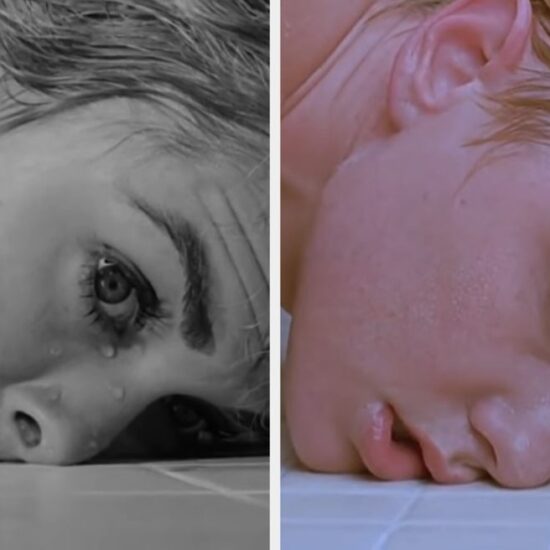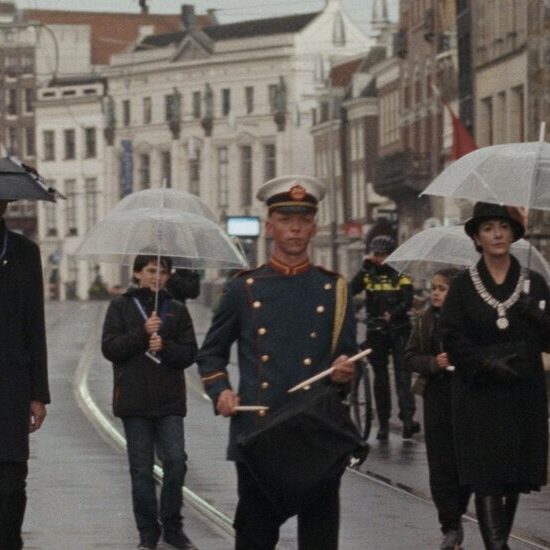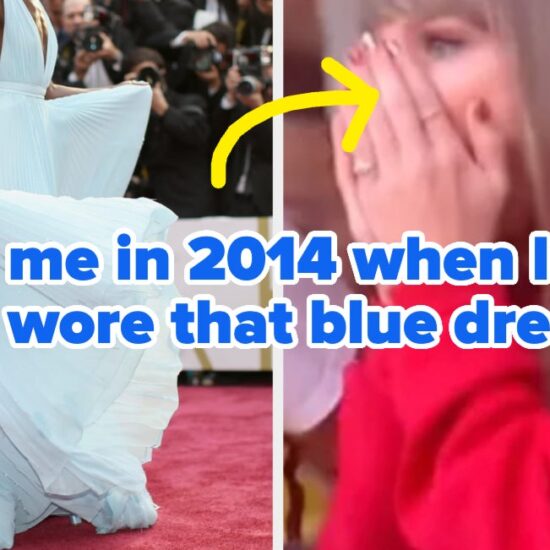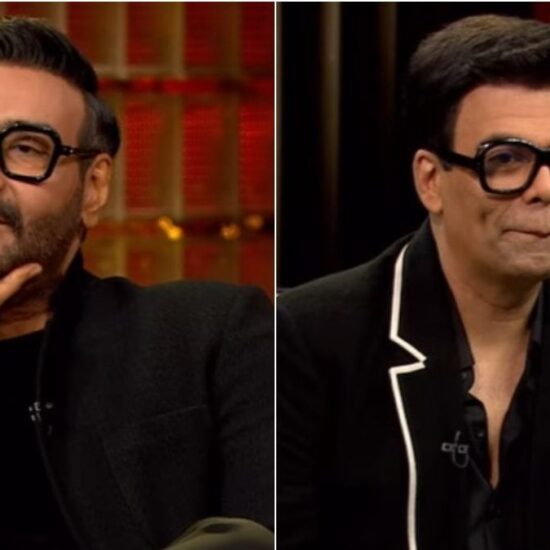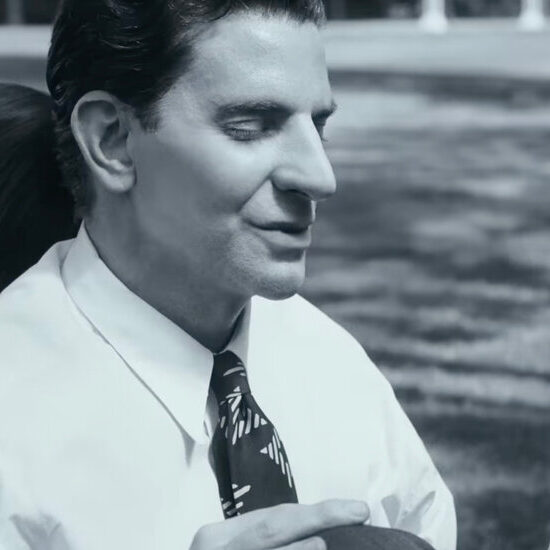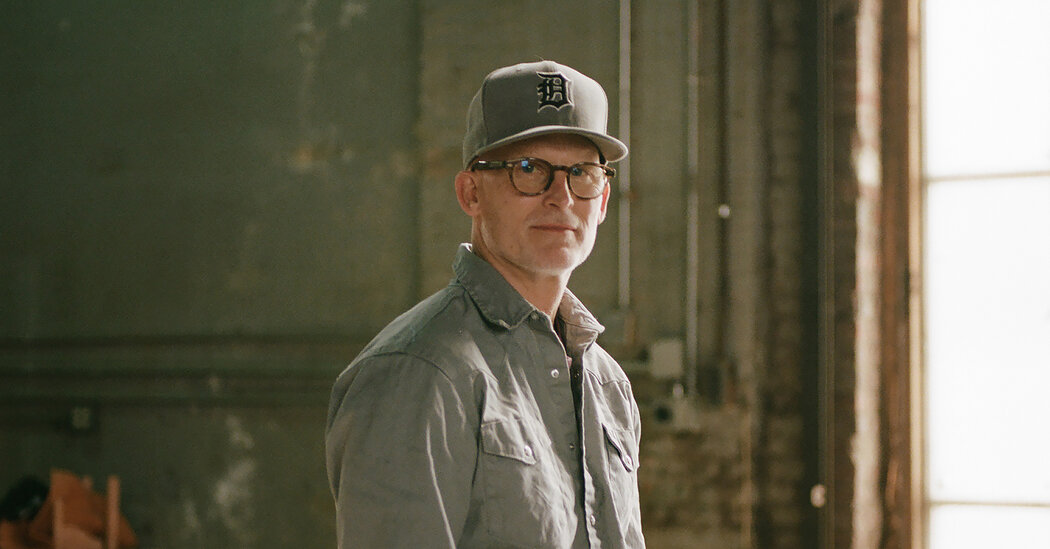
The hit, 45 years ago, shook up the world of football. Then, just as quickly, people moved on. But not Darryl Stingley, the receiver for the New England Patriots who bore the head-on charge by Jack Tatum of the Oakland Raiders. Stingley was rendered quadriplegic. Tatum, a defender known as “The Assassin,” notoriously never apologized.
The artist Matthew Barney was an 11-year-old in Idaho at the time and remembers the incident from constant slow-motion replays on television. He was just getting into the sport seriously himself, and the Tatum-Stingley collision, though shocking, didn’t stop him. Violence was inculcated in football training, he recalled. It was also addictive.
“That was my gateway, feeling that blow to the head and what that feels like in your body,” Barney said in an interview in March while editing “Secondary,” his new five-channel video installation that takes that 1978 event as its point of departure. He relished practice drills where he and other boys were ordered to slam into each other at top speed, he said. “You’d walk away, and you’re seeing stars.”
Barney became an elite high-school quarterback, but he changed course during his years at Yale University, emerging from there in 1989 into the New York art world, where he found near-instant success. Physical duress was immediately salient in his work, from the “Drawing Restraint” projects in which, for instance, he would harness himself and move along a gallery’s walls and ceiling, attempting to draw on the wall.
Football served as a prompt in the “Jim Otto Suite,” which Barney made in 1991-92, one of the early works that established his distinctive approach to combining performance, video and sculpture. Its inspiration was Otto, a Raiders player whose numerous injuries led his body to be loaded with prosthetic materials. Otto’s story collapsed resilience and destruction, and artistically opened performance and sculpture horizons.
But the sport itself would recede in Barney’s work, engulfed by countless other themes — sexual differentiation, reincarnation, cars, sewers and excrement, among many others — and the epic scale and baroque staging of his “Cremaster Cycle” (1994-2002) and “River of Fundament” (2014) films. (Metrograph, a movie theater in Manhattan, is showing the “Cremaster” films this month and next.)
With “Secondary,” which is open through June 25, Barney is tugging at a loose end that goes back to his childhood. From a place of physical and intellectual maturity, he’s scrutinizing a sport — and a country, because football is quintessentially American — that may or may not have changed. Now 56, he is taking stock of himself and an uneasy nation.
“There’s a way that the violence in our culture has become so exposed everywhere you look,” he said. “I think my relationship to that legacy is by way of my experience on the football field. I wanted to make a piece that looks at that, in more ways than one.”
The new work is concise for Barney. It runs one hour, the clock time of a football game. Six performers, out of a principal cast of 11, enact the roles of players in the 1978 game, including Barney as Raiders quarterback Ken Stabler. It was filmed at Barney’s warehouse studio in Long Island City, near the East River. And it is showing to the public now in that very venue — his final use of the space before he moves to a nearby facility.
Last fall and winter, the studio served as a simulated football field, a movement lab and a film set. When I visited, the principal performers — including David Thomson, who plays Stingley and is the project’s movement director, and Raphael Xavier, as Tatum — were running through some of the episodes that tell the story abstractly, in an indirect sequence.
There were weird things going on, too. Additional performers around the sideline wore the all-black costumes of devoted Raiders fans, walking around like camp horror figures; some were actors, but others were members of the Raiders’ New York City fan club. Some were being filmed inside a trench that was dug into the studio floor, exposing pipes, dirt and water.
An artist’s studio, Barney said, has traits of the stadium. “It’s kind of the organizing body for this story,” he said, adding: “I wanted my working space to be a character.”
Digging the trench, he said, revealed decaying pipes and how the tide floods and recedes under the buildings. “I wanted that infrastructure to be exposed, both as a manifestation of the broken spine of Stingley, but also as crumbling infrastructure within my studio, within the city of New York,” he said.
For all its allusions, “Secondary” — the title refers to the back line of defenders on the football field, cornerbacks and safeties whose job is to shadow the wide receivers and break up any passing play — holds to the Tatum-Stingley incident as its narrative and moral core.
It is rich and also tragic material. Stingley died in 2007 at 55; Tatum, 61, died three years later. All his life after the hit, Stingley wanted an apology that never came. Tatum argued that the hit was just part of the job, even if he also boasted that his style of play pushed the line. Since then a flood of research has confirmed the sport’s toll. Stabler, whom Barney plays in “Secondary,” contributed to this knowledge posthumously when his brain was found to show advanced chronic traumatic encephalopathy, or C.T.E.
I asked if Barney, the former quarterback, had come to worry about his own health. “Honestly, yeah,” he said. He was glad, he added, that he stopped playing when he did.
“Secondary” has a staccato format, amplified by its staging: A jumbotron-like overhead device shows one video channel on three screens, while four other channels run on monitors around the studio. The hit is evoked early, but much of the subsequent action returns to buildup — players warming up, fans getting hyped. The play sequences make up roughly the final third.
The point was never a literal treatment, said Thomson, the movement director and Barney’s close collaborator on the project. “This isn’t a docudrama,” he said. “I’m not trying to be Stingley, a person I don’t know. We’re not representing his life, we’re representing a moment.”
Still, Thomson said, from studying the real-life athletes, he distilled traits that informed how he worked with the actors who portray them. Stingley, he said, was earnest. Tatum, angry. Grogan, technical. Each trait, he said, became “a touchstone one goes back to without too many flourishes, and see what resonates from that place.”
In their research, Barney and Thomson read Tatum’s and Stingley’s autobiographies and watched hours of football highlights and practice reels. Video of the hit — which came in a preseason game, with no competitive stakes — is grainy and sparse. The camera follows the ball past Stingley’s outstretched arms, so that the hit takes place at the edge of the frame. There were not dozens of camera angles available like today.
This opened space for improvisation, and for Barney to introduce sculptural props that the players negotiate. (Barney has always stated he is a sculptor first and plans for these works to be shown in future exhibitions.)
Xavier, the dancer who plays Tatum, had to contend with a pile of wet clay dumbbells that distended and broke as he carried them. “I’ve worked with props before, but they were solid,” he said. “But the clay was alive.” It forced him, he said, to locate vulnerability, even tenderness, inside a character that he remembered from his own childhood as an aggressive, even mean, football player.
Indeed, the core players in “Secondary” are middle-aged men negotiating the memory of the culture they grew up in — and of their own bodies. Even stylized, the football movements involved in the piece are not instinctive or easy ones for men in their 50s and 60s.
Barney “particularly wanted older bodies, which I appreciated,” Thomson said. “What are the limitations that those bodies hold that may have a different resonance, a different visual narrative?”
But “Secondary” enfolds other perspectives as it gestures toward a broader, contemporary American social landscape. The referees are a mixed-gender crew. Jacquelyn Deshchidn, a composer, experimental vocalist and member of the San Carlos Apache Nation, delivers an extremely deconstructed version of the national anthem.
“As an Indigenous person, it was something that I was excited to take on,” Deshchidn said. They became drawn, too, to the work’s environmental aspect, spending breaks on set staring into the damp trench. “It brought up imagery of bones and burial, and repatriation work — the way there are institutions truly built on top of our bones.”
Barney is an art-world celebrity (whose fame only grew during his more than decade-long relationship with the Icelandic pop artist Björk), but he prefers a low profile. On set, he cut a workaday presence with his close-shaven look under a cap. Performers in “Secondary” said his work ethic was intense but his manner open. While some people on the project are his longtime collaborators, like the composer Jonathan Bepler, many are new to his world.
There is a sense with “Secondary” that Barney is turning a page — certainly with the studio move, after some 15 years at that site, but in some private way, too. When I asked if he was feeling his age — our age, as we are contemporaries — he said yes.
“In a good way,” he added. “Letting go of being a young person is a big relief.”
Compared with his earlier work, “Secondary” strikes a more concise and collaborative note. “It’s more connected to the world,” he said. “It’s a piece that’s thinking through the environment within which it was made. In my 20s, I was trying to figure out ways of assigning a material language for what was inside me. This piece is different that way.”
“Secondary” may take its cue from 1978 and invite its players into a kind of memory work through their bodies — but the work’s structure, with its emphasis on the buildup to the bad thing everyone knows is coming, energizes it with premonition.
It ends in an elegiac vein, the final shots widening to the city. “It felt crucial to pan away from the specific to the general,” Barney said. “As much as the studio is a kind of micro frame, there’s a larger one that is the city and country that we live in. I want there to be some kind of legibility to read those different scales — for them all to be in there.”








